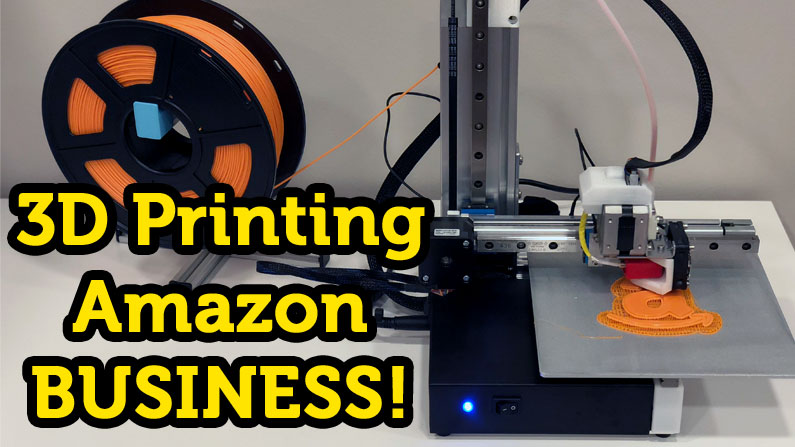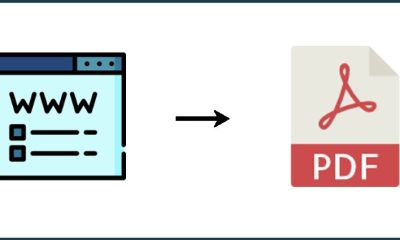Career Tips
How To Start A 3D Printing Business

If you’re interested in 3D printing or turning your digital creations into physical collectibles, you should consider starting a 3D printing business. It’s a field where you may combine your creative and IT knowledge to create a product. Learning about 3D printing and prospective business opportunities might help you decide whether this is the correct path for you. In this post, we’ll look at what 3D printing is, how to establish a 3D printing business, and why you should start one.
What is 3D printing?
3D printing is a technology approach for creating objects and designs with a specialized printer. The printer may be programmed to build products using a process known as additive layering. This method layers thermoplastics or other materials into predetermined forms. To build each layer, the material exits the printer’s needle while still molten.
The machine then waits for the material to dry before continuing, bonding the layers together using glue or ultraviolet radiation. This process may take several hours, depending on the design and printer. 3D printing is faster than traditional manufacturing methods, and each printer is small in comparison to the majority of industrial equipment.
How to start a 3D printing business
When launching a 3D printing firm, you may consider the following steps:
- Educate yourself about 3D technology
Educating yourself on the most recent 3D printing technology and applications will help you make sound business decisions and deliver high-quality items. It’s critical to understand how to operate and repair 3D printers quickly so that minor production issues don’t disrupt your workday. It can be difficult to discover universities that offer degrees in 3D printing, but several provide online courses and certificates in 3D printer operation and digital model creation.
- Decide on a market
Determine what your company will create after you have a solid understanding of the fundamentals of 3D printing operation and production. It’s useful to research local demand, such as whether there’s a burgeoning community of entrepreneurs in need of prototypes or a tabletop gaming group that could want to order miniature figurines. This can help your company get clients by targeting existing markets. If you intend to target an existing market, try contacting firms and communities with which you could work to acquire insight and broaden your scope.
- Plan your strategy
Decide whether you’ll work from home and if you’ll be the only employee. If you intend to start your business at home, you should examine where you can set up shop and how many printers you can successfully operate in that space. This may need finding more impartial or online venues to meet potential clients or investors. If you want to create something unique, consider renting out your printers and outsourcing them to other firms to get extra cash while your product grows.
- Choose your 3D printer
When deciding which 3D printer is best for you, keep in mind that you may not require a full-size, industrial printer. It is critical to keep within your budget and select printers that work with the materials you employ. For example, if you intend to produce little but complicated pieces, one powerful 3D printer may enough; yet, if you intend to create larger, simpler pieces such as kitchenware, numerous mid-tier 3D printers may be more appropriate.
It’s also a good idea to check for 3D printers that include after-purchase perks like warranties or customer assistance. These can help with any challenges that arise throughout your work and guarantee that production runs smoothly.
- Research filaments
Filaments are different materials used in 3D printers. It is critical that you investigate which filament is ideal for your product because the usage and circumstances required to print without warping differ. To help you begin your research and get an idea of what might work for your product, here’s a list of several typical filaments, along with their advantages and cons:
- ABS: Acrylonitrile butadiene styrene is durable and cheap, but can produce irritating fumes and requires a heating bed to print.
- PLA: Polylactic acid is organic and prints fast, but it’s weaker than ABS and can warp under high temperatures.
- PETT: Polyethylene terephthalate is FDA-approved and doesn’t warp, but the printer nozzle and heating bed require fine-tuning to use it.
- Sandstone: This material has a unique exterior finish and doesn’t require a printer bed, but it’s not as durable as others.
- Wood: A wood material has adjustable aesthetics and shades, but is more malleable after printing than other materials.
- Metal: Metal is durable and doesn’t need a heated bed but may take longer to shape.
- Flexible TBE: This material has a rubbery elasticity and high-quality form but needs fine-tuning to emerge from the nozzle.
Decide on a brand and platform
The final stage before promoting and selling your goods is to decide on a name and brand for your new firm. It is critical that you separate your company from competitors and successfully express what it offers. This could be accomplished by creating a logo or label for usage on a website and other social media sites. If you begin with a physical storefront, utilize the logo as the foundation for décor and store design. There are also various websites that allow designers to run stores from their site.
What types of products can a 3D printer create?
3D printers can generate a variety of complicated designs for things that can be sold. If your design includes multiple moving parts, you can develop them separately and connect them. Some of the most typical markets where 3D printing firms is beneficial are:
- On-demand prototypes
- Customizable eyeglasses
- Collectible toys, board game pieces and parts for toy repair
- Smartphone cases
- Home decorations such as plates, photo frames, planters and cutlery
- Spare parts
Why start a 3D printing business?
Here’s four reasons you might start a 3D printing business:
- Sustainability
Most 3D printing procedures generate little to no waste, and additive layering utilizes all or most of the material. Most of the filaments used in 3D printing are biodegradable or recyclable. Because of its rapid production time, 3D printing can use less energy than industrial production lines.
- Efficiency
Increased demand is less of a hurdle for production with 3D printing because the method is already efficient when compared to industrial production. It also eliminates the need for clients to worry about ordering either too little to justify production or too much to overload production. 3D printers make multi-step processes easier, so even if you offer the service of cleaning and sanding your items, the operation can still run smoothly.
- Profitability
Even if you have a niche product, building your firm around an on-demand production and sales system allows you to avoid overflow. You may manufacture all products when a client orders them, so you don’t waste resources without bringing income to the company. This no-excess method enables you to be more fiscally prudent at the start of a firm. This may also be useful if your 3D printing business is a side job.
- Flexibility
Depending on the items or services you intend to sell, 3D printing can be a fairly automated operation. This allows you to market yourself and your firm more effectively, or you can use the extra time to improve your knowledge and skills in model production and other filament procedures. It also allows you to create your own production hours.












